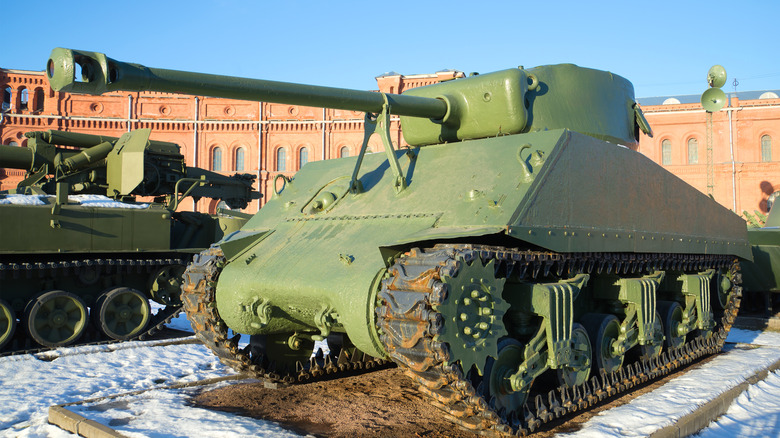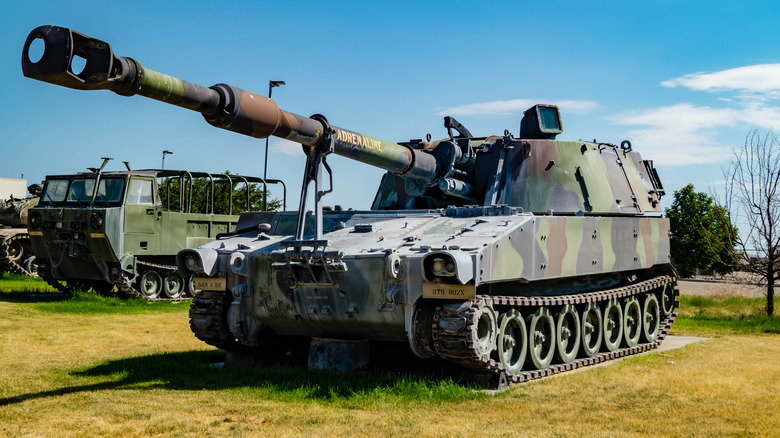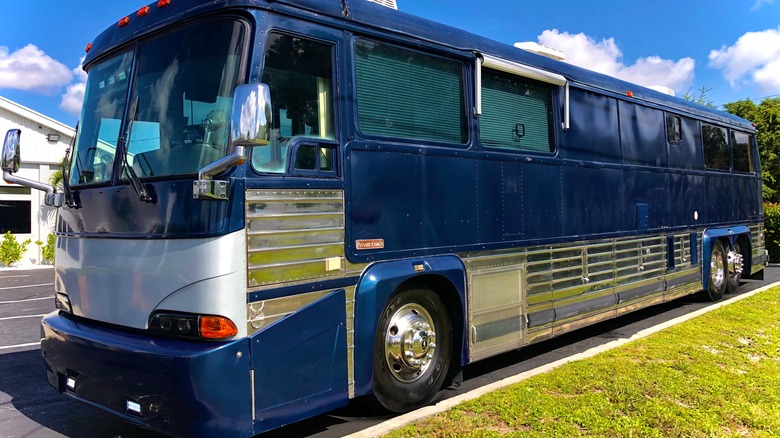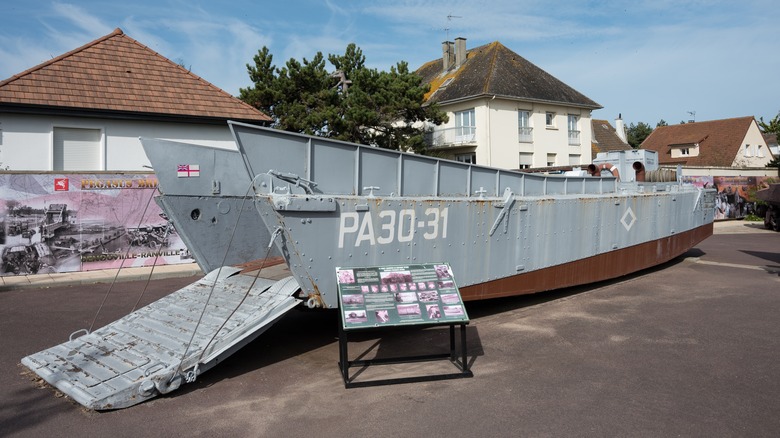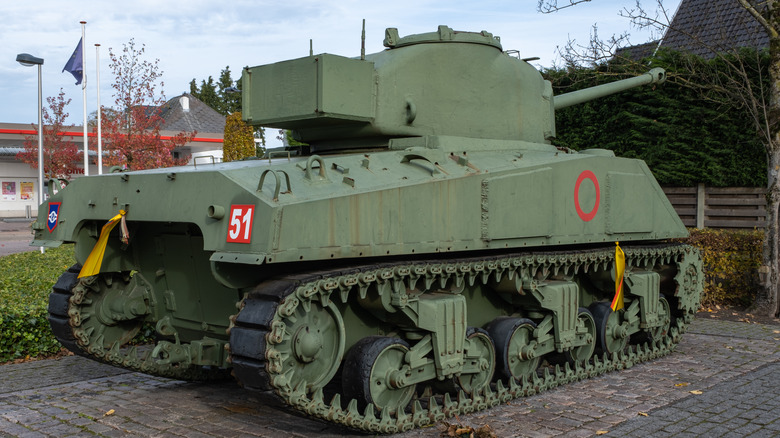4 Different Vehicles Powered By The Detroit Series 71 2-Stroke Diesel Engine
The Detroit Series 71 diesel engine ended production just before the turn of the millennium, but it dates back to World War II. With that type of lifespan, it should come as no surprise that it powered a bunch of vehicles over its lifetime. Make no mistake, this was a large engine, and as a result, you'll mostly see it powering large vehicles like school buses and many military vehicles. This is not an engine you'd put into a project car as you do with smaller motors, but if you happen to have access to a commercial-sized bus, it's a good fit there.
While it's been out of production for, the engine has a long history to look at, and while this list just features a handful of vehicles and vessels powered by the Detroit Series 71, there are plenty more out there. The 4-stroke Detroit Diesel engine ended up retiring and eventually replacing its 2-stroke counterpart, but it'll be a long time before people forget about the legacy it left behind.
M109 Paladin
The M109 Paladin is a howitzer that was first produced back in 1963 and used by the U.S. Army. It received numerous iterations over the years, but the motor remained in place throughout its run. The M109 is self-propelled by a Detroit Diesel engine, more specifically the 8V-71T, and can reach a speed of 35 mph. With it being a howitzer, the top speed isn't a huge deal, as the damage this vehicle does will be from afar. The M109's cannon had a range of 11 miles, so ideally, it'd avoid seeing combat being that far away from the action. It was manned by a 6-man crew, with three of them being ammunition managers.
While this Detroit Diesel engine is no longer in production, it didn't stop the military from using it in its howitzers past its expiration date. The M109 continued to be used well into the 2000s, and only as recently as 2023 was the M1299 revealed as a replacement for the outgoing M109. Instead of relying on Detroit Diesel for another go-round, the U.S. Army offered Cummins a contract in 2021 to begin supplying engines.
MCI MC9 Crusader II
The MCI MC9 Crusader II might sound like something used by the military, but it's actually a 40-foot-long bus that can seat over 40 passengers while also housing a restroom. The Detroit Diesel 8V-71 let this bus hit 280 hp at 2,100 rpm and with a 140-gallon gas tank, it could travel quite a way before having to stop for a fill-up. This was once one of the flagship buses produced by MCI, but, as you may have guessed, it didn't last forever. Nowadays, the two diesel options used by MCI are part of the J-Series and D-Series line. The flagships of these two lines include J4500 and D45 CRT. The company also utilizes a zero-emission version of the J4500 called the Charge.
Much like the howitzer on the list from earlier, the newer bus designs from MCI replace the Detroit Diesel engine and use one from Cummins instead. There are still used versions of the Crusader IIs to fix up with the Detroit Diesel engines still intact, and if that's something you're interested in doing, you shouldn't have problems finding a community of people doing the same.
LCM MK3 Landing Craft
Perhaps the most recognizable World War II transport is the LCM MK3, a craft that was used prominently during the D-Day landings, and it was powered by a pair of modified Gray Marine 64H9N 6-71 engines. This transport could carry up to 60 people, and more than 8,000 of them were produced over the duration of WWII. Following the war, different variations of the diesel motor continued to be used by the Navy. The most powerful option seen was the 12V-71, and it was used to power the LCU 1610 class crafts.
No matter the craft, it took two at least Detroit Diesel motors to get them going. The engine combo in the 1610 produced 680 hp sustained, and while the same pairing was seen in the LCM Type 8s, it was only doing 450 hp. The LCM Type 6s used two different Detroit Diesels depending on the vessel. Some of them used the 8V-71, while others used the lesser 6-71 engines. Only recently has the Navy begun to phase the Detroit Diesel motors out for good with the announcement of the LCU 1700. Instead of sticking with Detroit Diesel, the LCU 1700 is powered by of pair of CAT C18 Diesel engines.
M4A2 Sherman Tank
The M4A2 variation of the M4 Sherman, one of the most impressive tanks of all time, is an interesting situation because while it was powered by the Detroit Diesel 71 engine, it was a combination of two of them put together. This joining was officially called the GM 6046 engine, but it was built using a pair of Detroit Diesel 6-71 motors. This twin-Diesel engine was able to produce 410 hp for the World War II-era tank. The large Detroit Diesel engines were never trying to be the lightest motors, and the 6046 variation took that to the next level. This hefty joining of two 6-71s weighed more than 5,000 lbs, so it's tough to imagine a person lugging this one around.
Through the duration of WWII, more than 20,000 military vehicles used either the Detroit Diesel 6-71 engines or the GM 6046, and the number gets even larger when you take the 45,000 landing craft into account. Some of the crafts went further beyond the 6046 and required three and sometimes four 6-71s to create a powerful enough motor. It took two of these quad engines, dubbed the 6051, to power the LCI (L) and LCS (L) landing crafts — the L standing for large.
